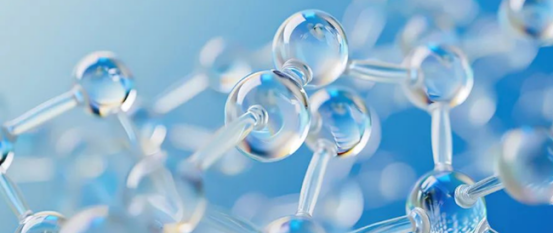Tranexamic Acid VS Niacinamide: Whitening Ingredients Competition, Who is the Real King of Whitening?
10/15/2025 10:50:08
Tranexamic Acid VS Niacinamide
Therefore, most girls will continue to try various whitening products, hoping to find the secret weapon that can make their skin glow. Among the many whitening ingredients, tranexamic acid and niacinamide are undoubtedly the two most popular players. So, which of these two ingredients is better?
Today, let us take a deep look at their whitening principles and effects.

1 How does the skin darken?
In fact, skin darkening is closely related to melanin. Melanin is a natural pigment produced by melanocytes and stored in the basal layer of the epidermis. Its existence not only gives us the depth of our skin color, but also protects our skin from ultraviolet damage to a certain extent.

However, when melanin is produced too much or unevenly distributed, it will cause problems such as skin darkening and spots. The production of melanin is regulated by many factors, the most important of which is the activity of tyrosinase. Tyrosinase is a key enzyme that participates in the synthesis of melanin. When the skin is exposed to ultraviolet rays, ultraviolet rays stimulate melanocytes, promote the production and activity of tyrosinase, and then promote the synthesis and deposition of melanin. In addition to the stimulation of ultraviolet rays, other factors may also cause skin darkening, such as hormonal changes, genetic factors, side effects of certain drugs, etc. These factors may further affect the activity of melanocytes and the synthesis of melanin.
2 Tranexamic acid: Inhibited tranexamic acid, also known as tranexamic acid, is a synthetic protease inhibitor.
In the field of dermatology, tranexamic acid has a therapeutic effect on many diseases such as chloasma, post-inflammatory pigmentation, and melanosis.
So, how does tranexamic acid achieve whitening and lightening? The whitening principle of tranexamic acid is mainly to inhibit the activity of tyrosinase, thereby reducing the production of melanin. Specifically, tranexamic acid can compete with tyrosine and interfere with the catalytic effect of tyrosinase on tyrosine metabolism. In addition, tranexamic acid can also inhibit the synthesis of melanin through various pathways, such as inhibiting the release of prostaglandin E (PGE2), inhibiting the activation of vascular endothelial growth factor receptors (VEGFRs) and the expression of melanin production proteins.
3 Nicotinamide:
Transfer nicotinamide, also known as nicotinamide and B3, is an amide compound of nicotinic acid. In medicine, it is widely used to treat skin diseases such as photosensitive dermatitis and acne, and has good therapeutic effects in inhibiting melanin deposition and anti-inflammatory effects.
The whitening principle of nicotinamide lies in inhibiting the transport of melanin. Simply put, it is to prevent the transport of melanin from melanocytes to surrounding keratinocytes, thereby reducing the deposition of melanin in the stratum corneum. In addition, nicotinamide can also accelerate cell metabolism, promote the synthesis of collagen, improve cell activity, avoid melanin precipitation, and then promote the metabolism of melanin-containing cells and accelerate the process of skin lightening.
4 Which whitening ingredient is the most effective?
The whitening principles of tranexamic acid and niacinamide are not the same. The former mainly achieves whitening effect by reducing the synthesis of melanin, while the latter achieves whitening purpose by inhibiting the transport of melanin. Therefore, it is difficult to simply judge which ingredient has a better whitening effect. In fact, because tranexamic acid and niacinamide have different mechanisms for lightening pigments, if they are used together, the synergistic whitening effect will achieve a surprising effect of 1+1>2. This combination can inhibit the production and transport of melanin from multiple pathways at the same time, thereby improving skin pigmentation problems more comprehensively.




